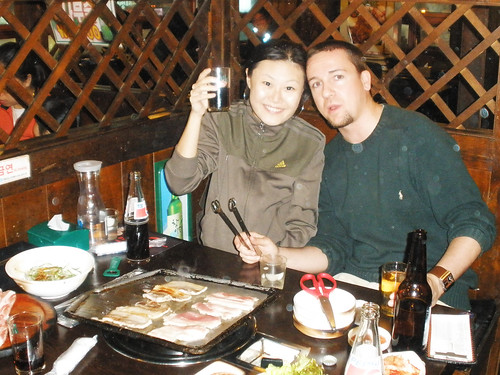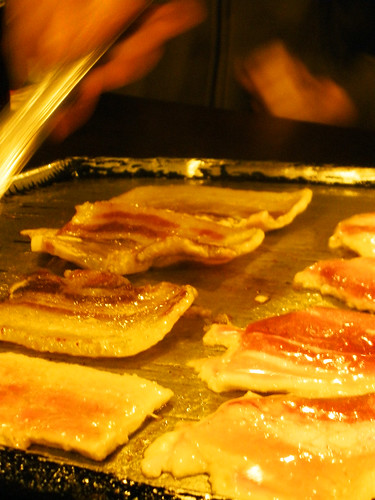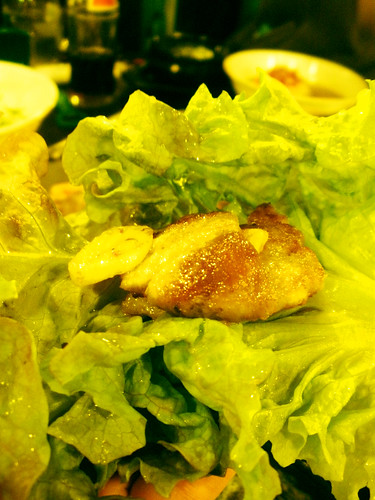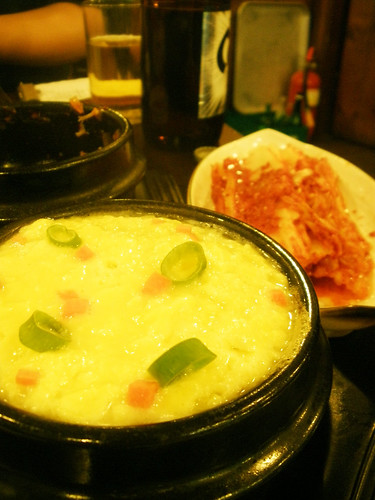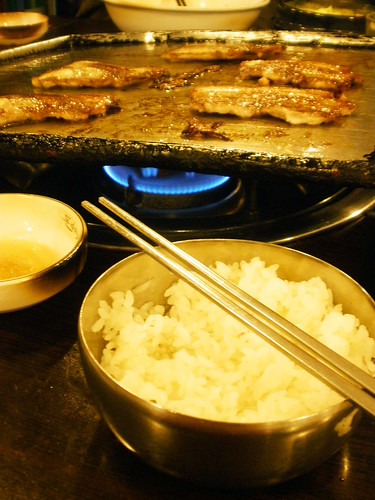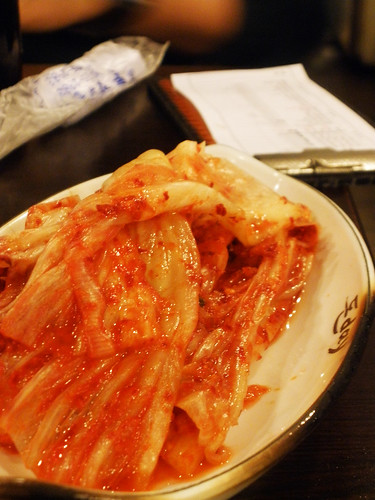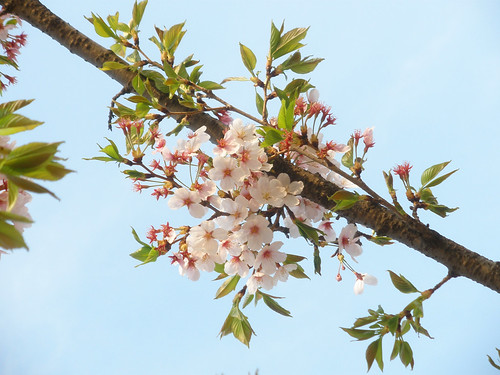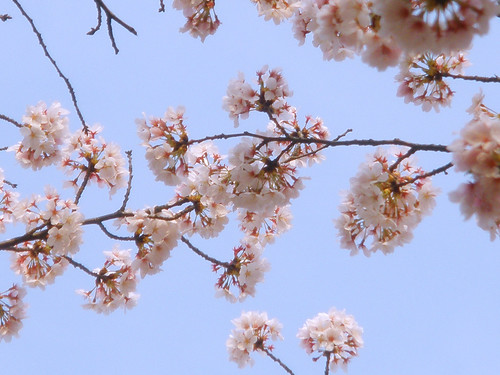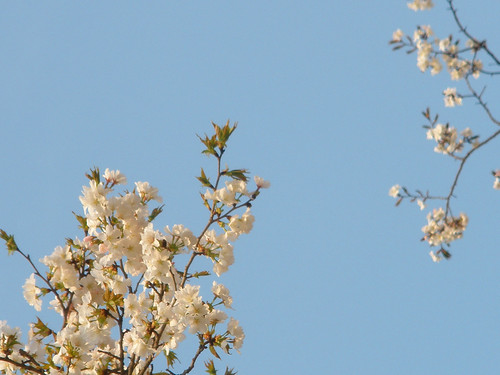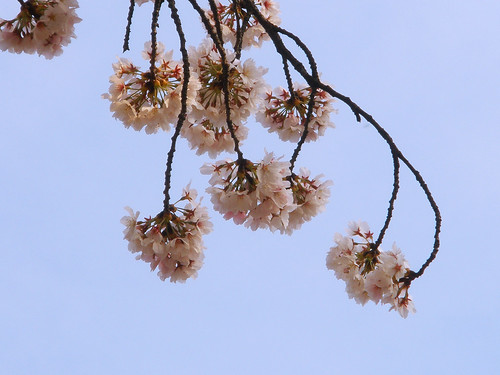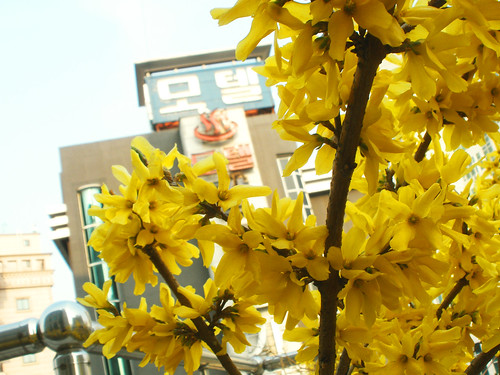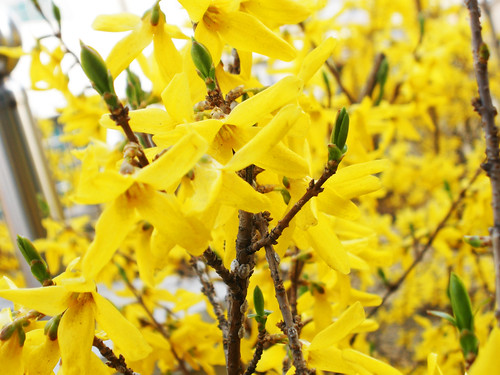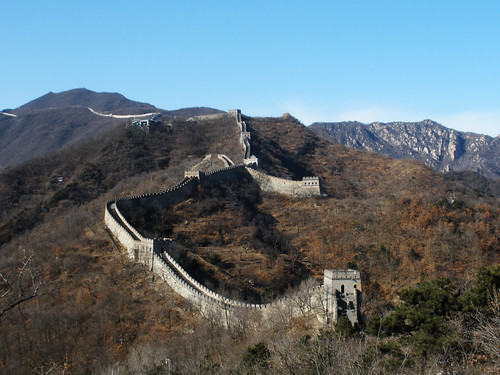
Hey, remember back in February when I went to China. And then said nothing about if for month and month and months and waited like three weeks to even take the pictures off my camera. Yeah, here's my extremely belated China recap, complete with pictures. (Just a warning, but this comes in at 2,500 words, which is ridiculously tl;dr. If you just want pictures, they're here.)
I arrived in Beijing on Monday morning after a short flight. My guide book mentioned that there are public busses from the airport to Beijing, and since the airport is way outside of town and I have this "thing" about being

PLA soldier on guard at Tiananmen Square. Groups of PLA soldiers were probably the most common site at Tiananmen Square. I felt sorry for the poor guy. He had to be freezing.
Once I checked into my hotel, I went to Tiananmen Square. I know next to nothing about Beijing, but in 8th grade I read a book called Forbidden City about the Tiananmen Square Massacre and, of course, I've seen pictures of the giant portrait of Mao. Tiananmen Square is HUGE. No really, huge. It took me a good fifteen minutes to walk across it and once you see it, it's not hard to believe that 100,000 protesters could gather there. I wanted to visit the National Museum of China, which borders Tiananmen Square, but turns out it was closed this year. My guide book snarkily commented that it was often closed while the curators redefined history according to party line, but Wikipedia tells me that it's being enlarged. Either way, it was a disappointment.

Qianmen Gate forms the northern border of Tiananmen Square.
I walked around Tiananmen Square for half an hour or so. Especially during my first day, Beijing strongly reminded me of Seoul. They are both large East Asian cities with too many taxis and not enough trashcans. There's a huge amount of cultural influence between the two countries in terms of fashion and etiquette, and as ethnic groups the Chinese and Koreans look very similar to my untrained western eye. Both cities were extensively renovated during the 20th century and share certain historical architectural similarities as well. Take the Qianmen Gate, which looks an awful lot like Namdaemun and Dongdaemun in Seoul or Paldalmun in Suwon. Of course, the illusion came crashing down whenever I tried to read a sign, hail a taxi or figure out what was going on. I'd forgotten how disorienting being illiterate is.
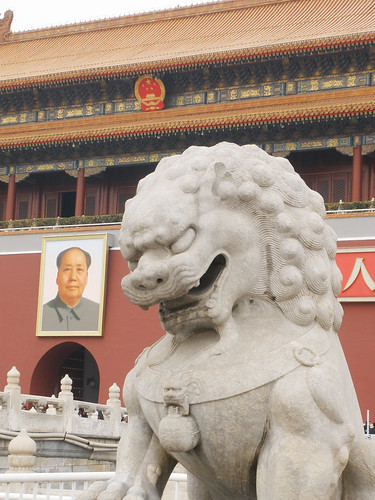
A stone lion stands guard in front of Tiananmen Gate. This is an attempt at an artsy shot. I'm trying to be more creative with my framing.
My plan was to visit the Forbidden City my first day, but it closes at 4:00 during the winter and I spent too much time trying to hail a taxi to my hotel and walking around Tiananmen Square. By the time I made it to the Forbidden City, they were no longer selling tickets. Instead, I spent an hour or so browsing the shops near the Qianshi Hutong. A lot of people I met in China told me they came specifically for the shopping, but I wasn't a big fan of shopping there. Being yelled at by an old Chinese woman because I don't want to be ripped off buying a knock off Louis Vuitton that I don't even want in the first place, Jesus Christ I was just walking past, leave me alone isn't my idea of a good time. I decided to make it an early night and headed by to my hotel around five. I had no problems taking the subway back to the general area, but oh my GOD did I get lost trying to walk from the subway to my hotel. I walked around the area for close to an hour trying to find the damn building. At one point I ended up at a different subway stop and had to hop back on the subway to get back to the right general area. I finally caved and tried to hail a cab, but I could not get a cab. All the cabs were either full, wouldn't stop or the driver shouted at me in Chinese when I showed him the card for my hotel. After an hour of getting more and more lost, I finally ran out into traffic, hopped in a cab and refused to get out until the driver took me to my hotel, which is what I should have done in the first place, but that's now how you catch a cab in Korea and there AREN'T cabs in rural North Carolina, so I was a bit out of my element. I ended up being lost for nearly two hours and it made me a bit gun shy about relying on cabs for the rest of my trip.

The Hall of Supreme Harmony at the Forbidden City
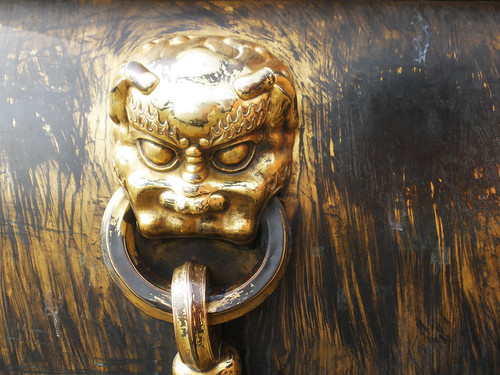
Each of the great halls had giant copper pots in front. They would have been filled with water in case of a fire. This is the handle of one of those pots.

The center dragon of the Nine Dragon Screen. There were gilded screens decorating a lot of the buildings and walls. This one was near the entrance to one of the private gardens.
On Tuesday I headed back to the Forbidden City. The Forbidden City was the imperial Chinese palace for nearly five centuries. Construction of the current complex began in 1406 during the Ming Dynasty, but there has been an imperial palace on that site since Beijing was a Mongol city known as Khanbalikh and Marco Polo visited. The Forbidden City is HUGE. It's the world's largest surviving palace complex, and has 980 buildings covering 720,000 square meters. I ended up spending over five hours there. The first part is the public part of the palace. It's all grand architecture and halls and gates. Then there is the private section. It's where the emperor and his family and the court actually lived. There's a whole set of rooms dedicated to the lives of the emperor’s concubines. It's mazelike; I got lost several times while I was there. The Forbidden City was quite cool, even if I had lost all feeling in my toes by the time I left.

Taxis at Tiananmen Square. They DID NOT want to stop for us. I really missed the Korean idea of taxi stops.
On Wednesday, I went to the Great Wall of China with my friend Tony and Christine. Tony and Christine are from Korea. Well, they're from Canada and America, respectively, but they live in Korea, which is how I know them. Tony teaches at the elementary school closest to mine and we met on the bus. They were in Beijing the same time I was (we booked our tours through the same company) and we all thought it would be cheaper and easier to visit the Great Wall of China as a group. Christine called me Tuesday night and after several hours of playing a completely unnecessary game of phone tag, we decided to meet at 7:00 Wednesday morning by the flagpole in Tiananmen Square. I was late, as usual, but I still ended up waiting nearly thirty minutes for them to arrive. Arrive they did, however, and we started our quest to the Great Wall of China. I'm glad I waited, though. The trip would have been much more difficult without them.
There are three main sections of Great Wall near Beijing: Badaling, Mutianyu, Simatai. Badaling is the section most people visit since it's the closest to Beijing, but it's also heavily reconstructed (only the base is original; the rest of the wall was built in the 1950s). The Mutianyu and Simatai sections are older, less visited and more authentic. I'm a snooty purist when it comes to my crumbly ruins (I wanted them crumblier, dammit!) and Tony's friend had visited and raved about the Simatai section of the Great Wall, so we decided to go there. My guide book said it was possible to take a bus from Dongzhimen station in Beijing to Simatai. Since it was previously established I'm adventurous when it comes to transportation in foreign countries, Tony speaks pidgin Chinese and we were running low on money, we decided to take the bus. We took a taxi to Dongzhimen (and ha! trying to catch a taxi at Tiananmen Square was a nightmare), but couldn't find the bus terminal. We finally flagged an expat on his way to work and explained that we wanted to catch the bus to Simatai. He told us he'd lived in Beijing for four years and had never heard of someone taking a bus to Simatai. Then he pointed a collection of buses parked along the side of the road (with no terminal or building in sight) and told us that was the Dongzhimen bus station, but maybe we'd be better off hiring a taxi for the day. We considered the likelihood of us getting horrible lost in the Chinese countryside, decided we just weren't that adventurous and headed back to Tony and Christine's hotel.
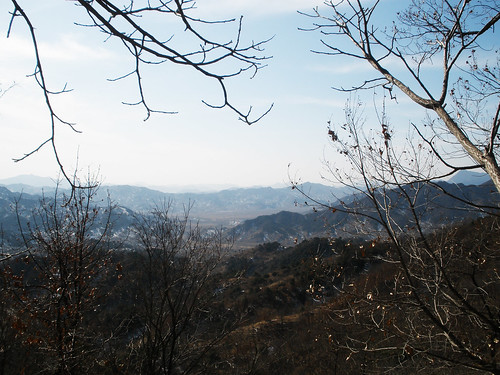
The Chinese countryside as seen from close to, but not quite there yet, the Great Wall of China. That was one steep climb up.
The concierge also suggested hiring a taxi for a trip to the Great Wall and quoted us the ridiculous price of 1000 yuan. 1000 yuan is about 146 USD, which is about right for hiring a private taxi for the day in the US, but we weren't in the US. (Quick aside, a bunch of the westerners I met raved about how cheep Beijing was, but since I was spending won that had been converted to yuan, not dollars converted to yuan and the won to yuan rate isn't nearly as good as the dollar to yuan rate, I didn't really find China that cheep.) Plus, we didn't have 1000 yuan. My debit card was stolen in Bangkok and my replacement one hadn't arrive before I left, so I just converted what I thought was a sufficient about of won at the airport. It would have been a sufficient amount if my hotel hadn't taken half of it as a deposit, and while I had extra won with me in case of an emergency, it was back at my hotel. Tony had blown through most of the money he had converted and was also suffering from a SE Asia debit card robbery, and Christine was just flat broke until her paycheck was deposited in her Korean bank account that afternoon. We ended up combining all our money and bargaining with the concierge until he accepted that price. We still ended up getting ripped off, but not quite as much and hey, I got to go to the Great Wall of China.
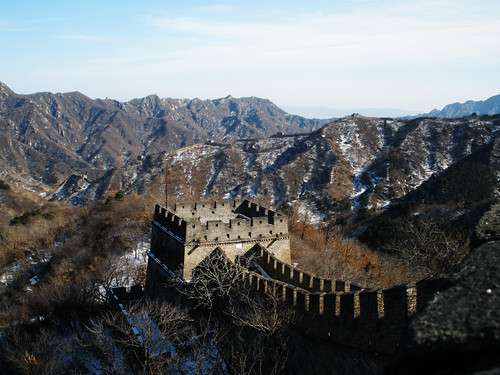
[all along the watchtower // princes kept the view]
We ended up not going to Simatai. Large portions of that section were closed off due to a recent snow and we decided to Mutianyu instead. The Mutianyu section is one of the best-preserved parts of the Great Wall of China. It was first built in the 6th century during the Northern Qi Dynasty, but was rebuilt in 1569 during the Ming Dynasty. It was AMAZING!
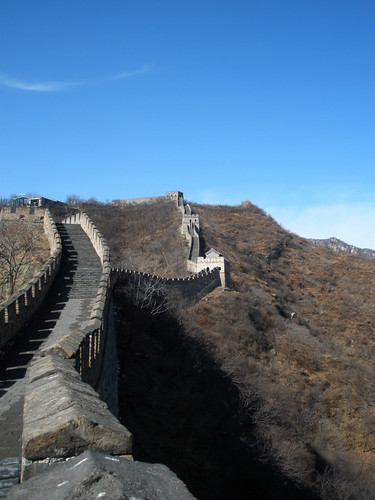
Taken once I finally - finally - stepped onto the Great Wall of China.
It was a long hike up to the Great Wall, and we made it worse by accidentally going to longest and steepest way. It, in all seriousness, took almost an hour to make the hike and only part of that is because I'm out of shape. I would have made a terrible barbarian invader. Seriously, I would have taken on look at the Great Wall of China and said, "No seriously, you expected to climb that mountain AND deal with angry Chinese soldiers towering above me. Screw this; let's go drink some fermented yak milk." And then Ghengis Khan would have killed me, so it's a good thing I'm not in a Mongolian horde. We were greeted at the top by an old Chinese woman selling beer, and we toasted making it to the top.
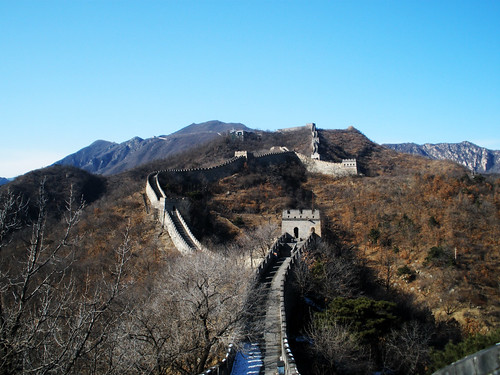
[we could have gone all the way to the Great Wall of China // if you'd only had a little more faith in me]
We spent an hour or so hiking along the Great Wall. It was largely deserted, but we did run into a few people. There were two guys from Victoria who were CONVINCED that on one side of the Great Wall was China and on the other side was Mongolia. Christine asked me if that was true and I shook my head no. The guys assured me that yes, it was in fact Mongolia on the other side. They know this because they watch South Park. You read that right: someone just fact checked with South Park. Christine and Tony were looking confused (and I'm a pretentious little know-it-all and I really hate it when I hear people being wrong), so I pulled out my guide book, flipped to the map and showed them the Great Wall of China and Mongolia and how they weren't actually close. I came very close to giving a little speech about how the current borders of China are a modern (and contested) invention and when people talk about "China" in a historical context, they are referring to people who identified as Chinese, not people who lived within the current borders, so when you talk about historic Mongolians and historic Chinese, it has very little to do with the modern countries of China and Mongolia. And then I shut my mouth, which is a sure sign that I'm GROWING as a PERSON.
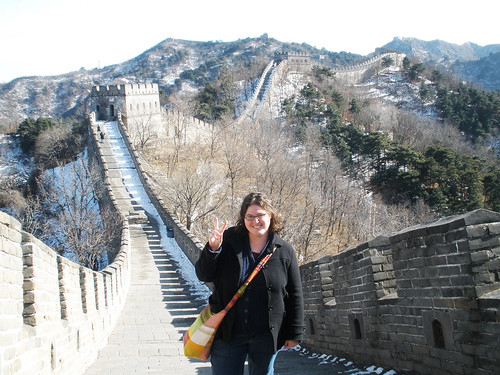
[we could have gone all the way to the Great Wall of China // now all you're going to be is history]
In addition to spreading scurrilous lies about geography, the two Canadians told us about a toboggan ride down from the wall. That's right: instead of walking down the mountain, we could take a wheeled toboggan on a winding metal track from the GREAT WALL OF CHINA to the parking lot. Dude, that's awesome. Of course we decided to, and it was actually loads of fun, even if it is a desecration of a historic monument. We stopped at Houhai, a lake in Beijing known for its nightlife, for dinner and some shopping before heading back to our hotels. I left the next morning and was home by mid afternoon.

